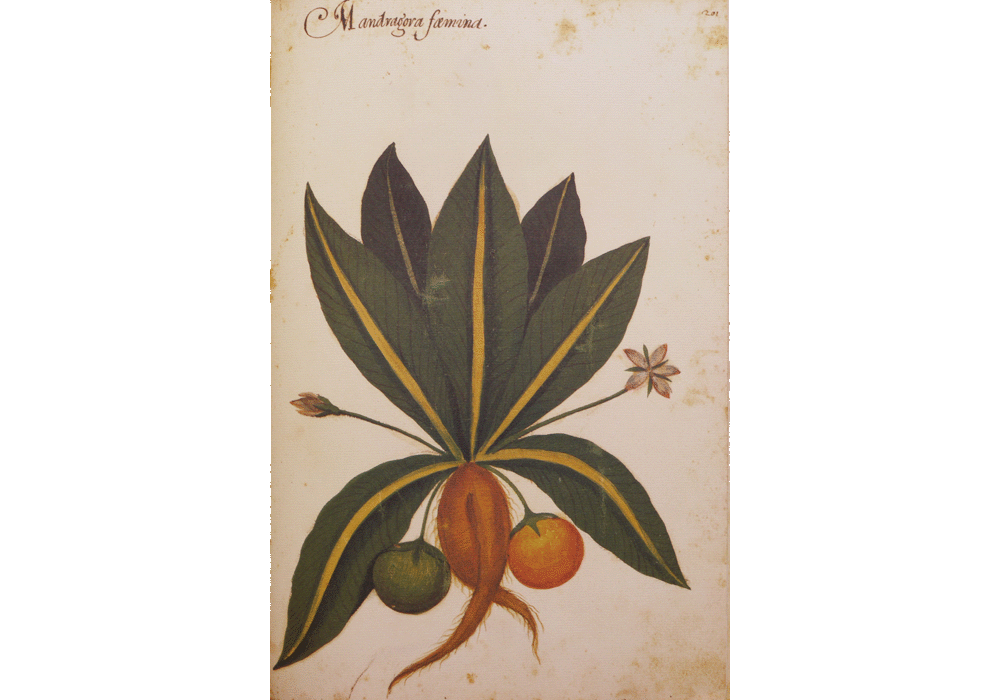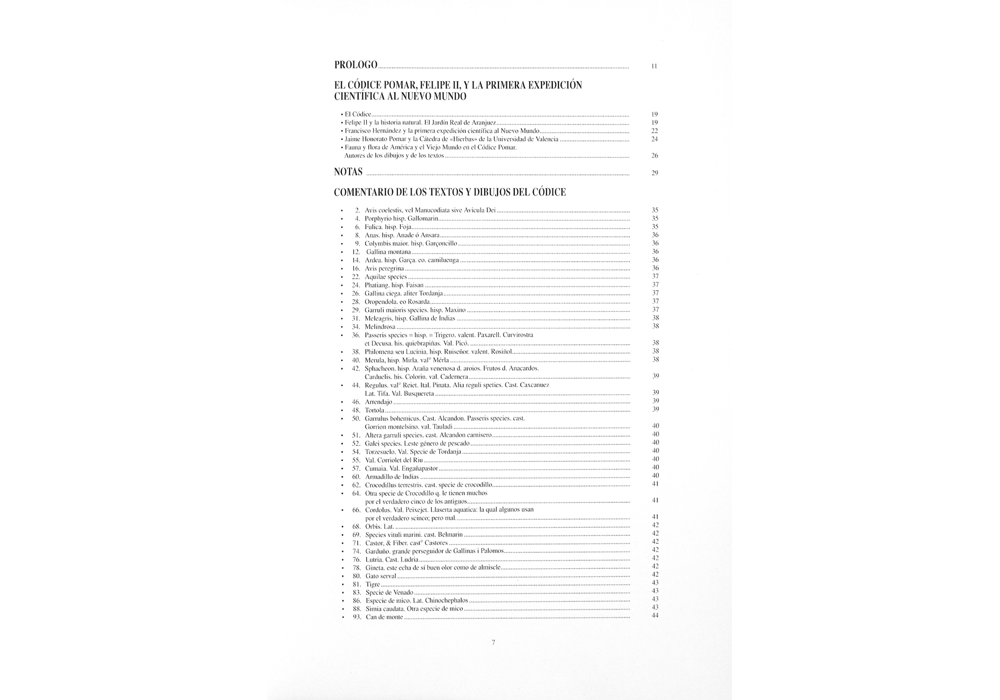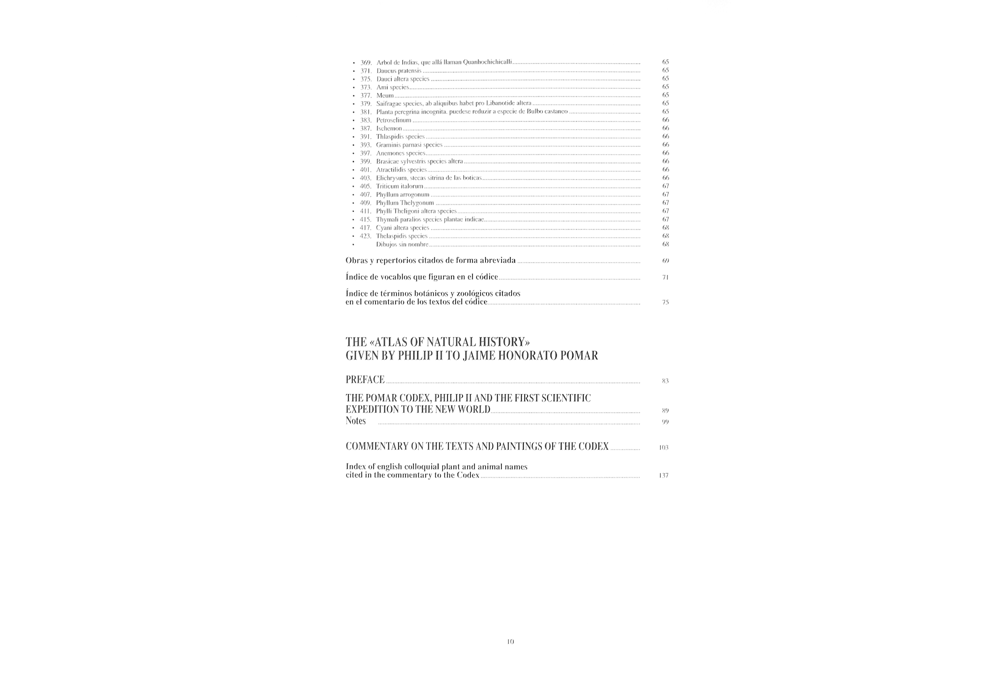|
|
|
| Seguir @vicentgarciaedi Twittear |
|
vgesa |

|
|
|
Synopsis: Atlas Historiae Naturalis, or Pomar Codex, is a pictorial manuscript composed of 218 illustrations in colour painted on one-sided paper, the first 47 concerning animals and from the 4th onwards plants. Latin titles in XVI century humanistic print. Old pagination in ink, defect in the top corner: from page 16 it jumps to page 21, from 197 it goes back to 180, following to the end modern page numbering in pencil on the reverse side of the illustrations in the bottom right hand corner. Illustration 42 is damaged in the bottom left hand corner. Binding with gilt decoration and inscriptions on the covers: "Jardín de Cámara" and "Retrato de naturaleza". Gilt edges. On the last leaf with XVII century print it reads: "El Rey nuestro Sr. Felipe II dio este libro a su medico el Dr. Honorato Pomar, valenciano, catedrático de yerbas en la Universidad de Valencia; heredole su hijo maestro Pomar y muerto él me lo vendió su madre la viuda de dicho Dr. Pomar por 50 libras, habiéndole juzgado los pintores en valor de 100 libras. H.M.D.L.V. (Our King Philip II gave this book to his doctor Dr. Honorato Pomar, Valencian, Professor of medicinal plants at the University of Valencia; his son the master Pomar inherited it and upon his death it was sold to me by his mother the widow of said Dr. Pomar for 50 pounds, the painters having estimated its value at 100 pounds. H.M.D.L.V.)". On the back cover, the following note: "Ex libris Academia Valentinae legatis ab Exmo. D. Jaunario Perellós, Marchione de Dos Aguas". None of the illustrations are signed, but a double foliation may be demonstrated which confers on the Atlas a great historical and scientific relevance. Firstly, a large part of the illustrations show typical features of Jacobo Ligozzi from Verona, one of the most famous plant and animal artists of the XVI century. Secondly, the rest of the Atlas illustrations are drawings of American plants and animals carried out in what is considered to be the first modern scientific expedition: that sent by Philip II to research "the history of natural things in our Indies". Directed by Francisco Hernández, this famous expedition studied Mexican nature from 1571 to 1577. This manuscript constitutes a source of exceptional importance of Renaissance botanical and zoological iconography. Its origins have a high historical significance: it was given by Philip II to Jaime Honorato Pomar, Professor of "herbs" or medical botany of the University of Valencia, the first chair dedicated to this subject in the Kingdom of Spain and one of the earliest in Europe. |
IBIC Rating: |
||
|
AC History of art / art & design styles |
1D Europe |
|


























